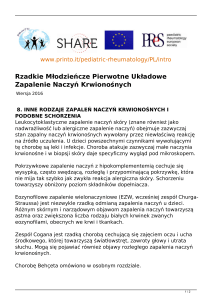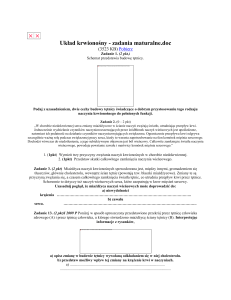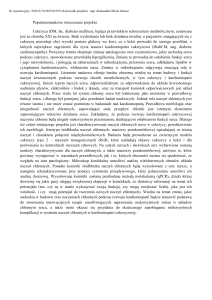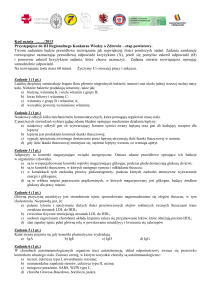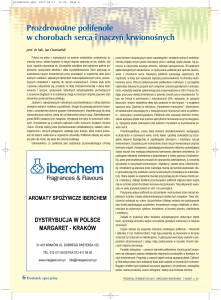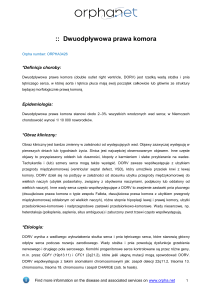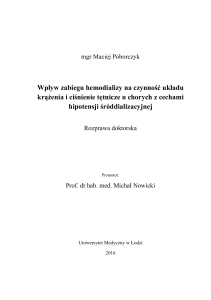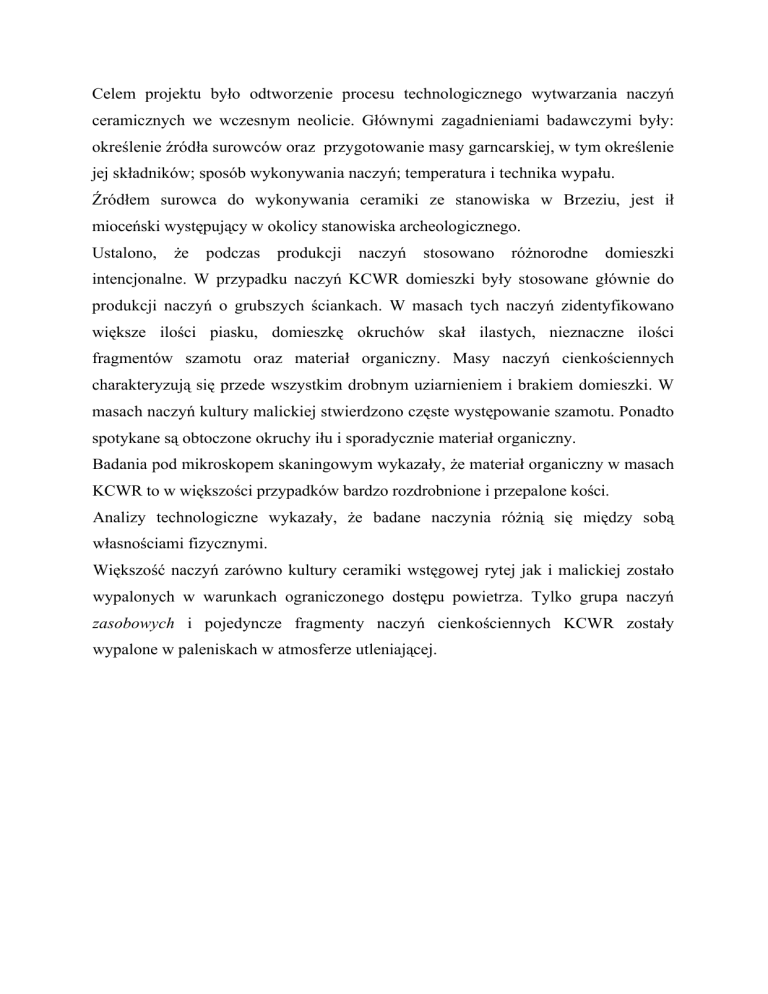
Celem projektu było odtworzenie procesu technologicznego wytwarzania naczyń
ceramicznych we wczesnym neolicie. Głównymi zagadnieniami badawczymi były:
określenie źródła surowców oraz przygotowanie masy garncarskiej, w tym określenie
jej składników; sposób wykonywania naczyń; temperatura i technika wypału.
Źródłem surowca do wykonywania ceramiki ze stanowiska w Brzeziu, jest ił
mioceński występujący w okolicy stanowiska archeologicznego.
Ustalono,
że
podczas
produkcji
naczyń
stosowano
różnorodne
domieszki
intencjonalne. W przypadku naczyń KCWR domieszki były stosowane głównie do
produkcji naczyń o grubszych ściankach. W masach tych naczyń zidentyfikowano
większe ilości piasku, domieszkę okruchów skał ilastych, nieznaczne ilości
fragmentów szamotu oraz materiał organiczny. Masy naczyń cienkościennych
charakteryzują się przede wszystkim drobnym uziarnieniem i brakiem domieszki. W
masach naczyń kultury malickiej stwierdzono częste występowanie szamotu. Ponadto
spotykane są obtoczone okruchy iłu i sporadycznie materiał organiczny.
Badania pod mikroskopem skaningowym wykazały, że materiał organiczny w masach
KCWR to w większości przypadków bardzo rozdrobnione i przepalone kości.
Analizy technologiczne wykazały, że badane naczynia różnią się między sobą
własnościami fizycznymi.
Większość naczyń zarówno kultury ceramiki wstęgowej rytej jak i malickiej zostało
wypalonych w warunkach ograniczonego dostępu powietrza. Tylko grupa naczyń
zasobowych i pojedyncze fragmenty naczyń cienkościennych KCWR zostały
wypalone w paleniskach w atmosferze utleniającej.
The aim of the project was to reconstruct the technological process of manufacturing
ceramic vessels in early neolith. The main researching problems were: identifying the
source of raw material and preparing ceramic masses (determining mineralogical
components), describing the methods of making pots, temperature and burnt
technique.
The source of raw material for making ceramics in Brzezie site was Miocene clay
which occures in surroundings of archeological site.
It was established that varied admixtures were used during vessels production.
In case of LBK vessels, admixtures were added mainly in the production of thickwalled vessels. Bigger amounts of sand, admixture of argillic rocks debris, chamotte
debris and organic material were identified in masses of these vessels.
Masses of thin-walled vessels are characterized by fine-grained material and lack of
the admixture. In masses of Malice culture vessels, frequent occurience of chamotte
was recognized. Moreover, well carred debris of clay and occasionally organic
material were met.
SEM examination revealed that organic material in LBK masses are mainly
fragmented and burnt bones. Technological analyses showed that examined vessels
differed between themselves in physical properties.
Majority of LBK as well as Malice culture vessels were burnt in reductive conditions.
Only groups of storage vessels and single fragments of thin-walled LBK vessels were
burnt in oxidizing atmosphere.

